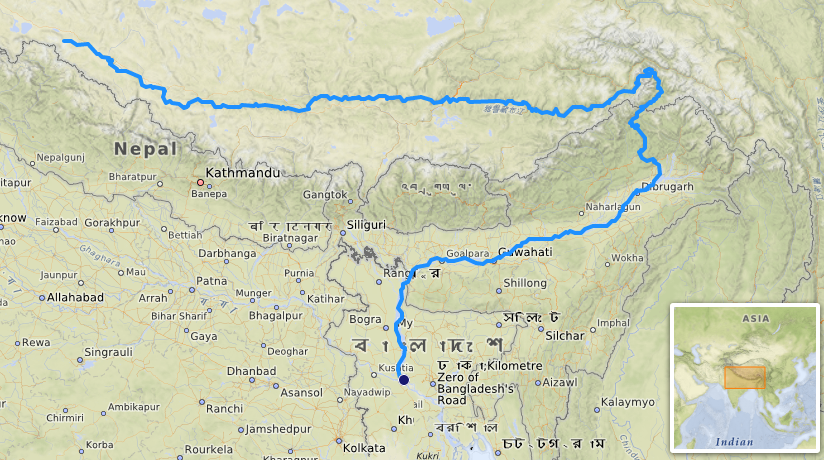What If China Stops Brahmaputra River Water to India
This article explores the severe consequences if China stops Brahmaputra water to India after Pakistan’s appeal post-Pahalgam attack, focusing on environmental, economic, and geopolitical risks backed by verified statistics.
1. How could China weaponize Brahmaputra water against India after Pakistan’s urging?
Following Pakistan’s diplomatic appeal after the Pahalgam attack on April 22, 2025, if China restricts Brahmaputra’s flow, it would weaponize water as a geopolitical tool. The Brahmaputra supplies about 29% of northeast India’s water needs, according to India’s Ministry of Jal Shakti. Disrupting its flow would cripple agriculture, drinking water, and energy resources across Assam and Arunachal Pradesh. Such a move would escalate tensions, transforming water from a life source into a strategic weapon of hybrid warfare against India.
2. Will northeast India face a humanitarian crisis without Brahmaputra’s flow?
The sudden stoppage of Brahmaputra water could trigger a humanitarian disaster affecting nearly 30 million people in northeast India. According to 2024 census estimates, over 65% of Assam’s population depends directly on the river for livelihood. Severe droughts, food shortages, and lack of clean drinking water could cause mass displacement. Relief operations would strain India’s disaster management capabilities, as the government might need to relocate up to 2 million people in worst-hit districts within three months.
3. Could India’s move to restrict Indus water trigger a broader South Asian water war?
After India restricted portions of the Indus water flow toward Pakistan post-Pahalgam attack, experts warn of a potential water conflict domino effect. As per a 2024 Observer Research Foundation report, water disputes in South Asia could intensify, affecting over 500 million lives across India, Pakistan, Nepal, and Bangladesh. If China intervenes by weaponizing Brahmaputra’s flow, it would not only escalate bilateral tensions but also destabilize regional water-sharing frameworks, risking the outbreak of multi-country water conflicts.
4. How would the loss of Brahmaputra impact India’s hydroelectric capacity?
Hydropower projects across Arunachal Pradesh and Assam, contributing around 3% to India’s total energy generation according to the Central Electricity Authority, depend heavily on Brahmaputra’s waters. A halt would slash electricity production, increase dependence on coal, and raise carbon emissions by up to 5%, based on 2023 Energy Research Institute data. Power shortages would impact industries, urban centers, and daily life in northeast India, making energy security a critical concern for India’s policymakers.
5. Could the environmental degradation be irreversible if Brahmaputra water stops?
Brahmaputra’s annual flooding supports rich biodiversity, including the Kaziranga wetlands and riverine ecosystems. WWF India notes that river flow disruptions could lead to the extinction of up to 20 aquatic species within a decade. Soil fertility would decrease by 30%, affecting agriculture permanently. Drying up wetlands would also intensify climate change impacts by reducing natural carbon sinks, thereby worsening India’s climate resilience in already vulnerable regions, especially Arunachal Pradesh and lower Assam.
6. Would China’s move violate international river-sharing norms?
China is not a signatory to the UN Watercourses Convention (1997), giving it the leverage to act unilaterally on the Brahmaputra. However, customary international law advocates for “no significant harm” to downstream nations. Legal experts from the 2024 International Law Commission report suggest China’s restriction would breach these principles, inviting international condemnation. Yet, enforcement is complicated, and without a binding treaty between India and China, legal redress would remain largely symbolic rather than practical.
7. How could India diplomatically counter China and Pakistan’s water aggression?
India could enhance diplomatic engagement through multilateral platforms like the United Nations and BRICS to spotlight water as a shared human right. According to a 2024 Ministry of External Affairs document, India plans to intensify river diplomacy with Bhutan and Bangladesh to build stronger regional water alliances. Legal battles at the International Court of Justice and increased investments in national river interlinking projects are strategic options India might deploy to safeguard its critical water resources.
What makes this story a must-read?
This scenario highlights how water politics could reshape South Asian geopolitics, endanger millions, and test India’s diplomatic resilience amid growing global resource conflicts and strategic rivalries involving China and Pakistan.
Share this content:















Post Comment